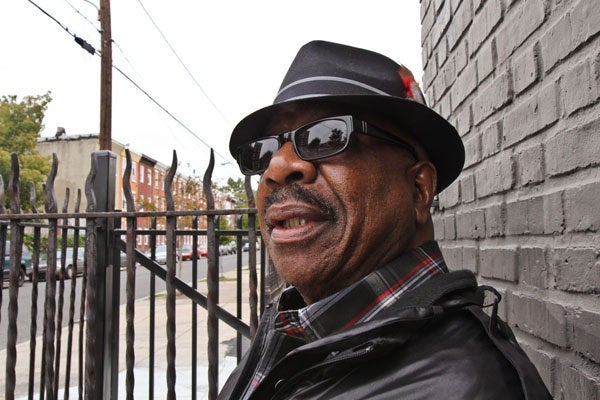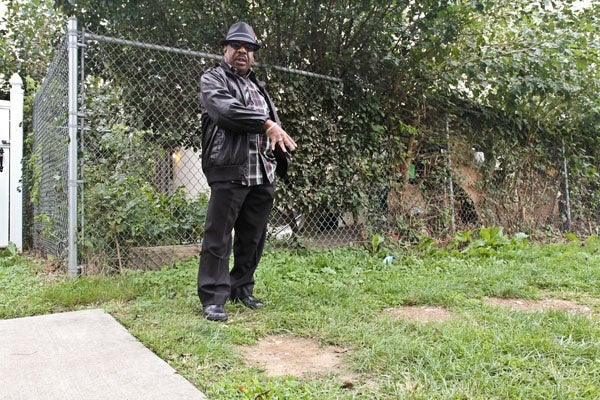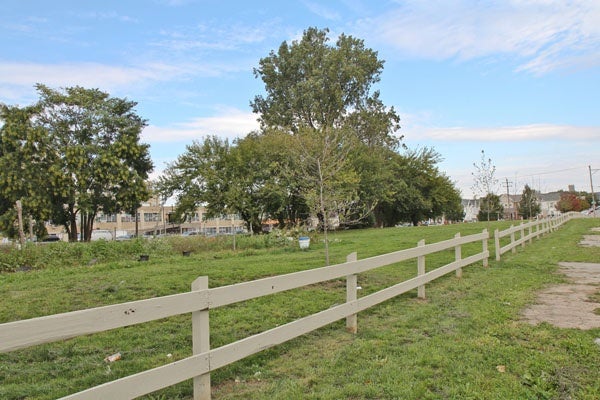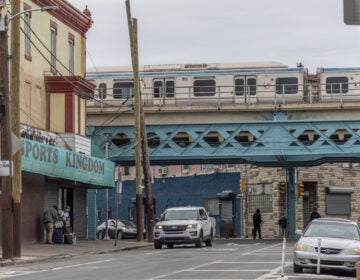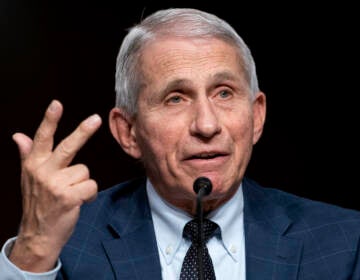Moving toward walkable neighborhoods for older adults
WHYY is launching a new conversation about the power of place and the ways neighborhood influences health. The series is called Designs on Health.
Urging us all to get our five servings a day, to exercise and get our cancer checks on time, that’s the bread and butter, well maybe, the peas and carrots, of public health.
Researcher Allen Glicksman said that advice from health officials is helpful, but “if there’s no place you can walk, and no place you can get fresh fruits and veggies and you have no transportation to get to those screenings, I can talk until I’m blue in the face and you’re still not going to be doing those things, even if you want to.”
Glicksman, director of research and evaluation at the Philadelphia Corporation for Aging, says government programs, such as Medicaid and Medicare, largely ignore one big part of the health equation: neighborhood.
Glicksman listed some of the neighborhood attributes that may have ties to health: “Broken sidewalks, streetlights that change too fast for an older adult to get across Broad Street … bus stops where there’s no place to sit down, just a pole to stand next to. Neighborhoods that are nice and kempt and lovely but it’s blocks and blocks and blocks to get to a grocery or a market.”
He and other experts want to help older people keep living at home for as long as possible. One key, they say, is making communities more walkable.
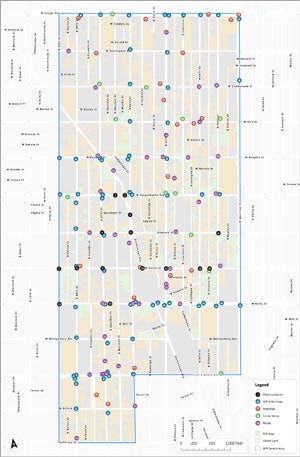 The Philadelphia Corporation for Aging mapped out neighborhoods from the “good stuff” — libraries, bookstores and cafes to the “bad stuff” — abandoned homes and homicides. On the maps, areas in tan point to vacant land; purple icons show murals in the neighborhood; and red dots indicate amenities. Click for a larger map.
The Philadelphia Corporation for Aging mapped out neighborhoods from the “good stuff” — libraries, bookstores and cafes to the “bad stuff” — abandoned homes and homicides. On the maps, areas in tan point to vacant land; purple icons show murals in the neighborhood; and red dots indicate amenities. Click for a larger map.
“So part of it is saying: ‘These things really do matter, people will walk if you change the environment,’ that it is worth the effort,” Glicksman said. “The other argument is: It doesn’t matter what you do. The people who are going to walk will walk, the people who don’t want to walk won’t.”
What in a neighborhood matters?
With funding from the National Institutes of Health, Glicksman led a study to measure links between neighborhood and three health indicators: body mass index, consumption of fruit and vegetables, and levels of physical activity.
The investigators gathered existing inventories from mapping experts and the Philadelphia city government.
They counted up the “good stuff” — libraries, bookstores and cafes and plotted out the “bad stuff” — abandoned homes and homicides. On the maps, areas in tan point to vacant land; purple icons show murals in the neighborhood; and red dots indicate amenities.
Glicksman’s team aligned those inventories with results from the Public Health Management Corporation’s Community Health Data Base Household Health Survey.
No one neighborhood factor — such as the mix of residences and retail or crime —emerged as closely linked to all three health outcomes.
“It means that if you want people to eat more fruits and veggies, if that’s your outcome, then you gotta worry about how much mixed use you have,” Glicksman said. “If you want people to walk more, you gotta worry about abandoned properties and crime.”
Checking with the community
The researchers shared their maps at a community workshop in North Philadelphia. About 50 people came out to offer suggestions. Some were older residents from the neighborhood’s largely Latino community, but Philadelphia city planners showed up too. Glicksman’s team had some ideas, but he says it pays to check in with residents to see which fixes they think will really work.
“They live in that community,” he said. “We don’t.”
Thirty-one-year-old Jose Niebez said sidewalks and shade trees are nice, but he also had some less concrete suggestions. His mother, who is 64, won’t walk to the grocery store, Niebez said.
“She doesn’t feel safe. Well, there’s a reason why, she doesn’t feel safe,” Niebez said. “She explains to me she feels this hostility with the youth. Feels like she’s not accepted.”
Niebez worries that neighbors don’t trust and help each other. Planning experts say parks and transit benches are part of the “built environment.” Niebez is ready to change the “social environment” by recruiting neighborhood teens.
He’d love to see young people ask, “Ma’am are you OK? Do you need me to walk you home? Do you need help with the bags.”
“Simple things like that,” he said. “It will build a stronger community.”
Knowing the neighborhood
The Philadelphia Corporation for Aging partnered with a North Philadelphia community development agency, Asociación Puertorriqueños en Marcha.
Deputy vice president of programs and sustainable communities Jennifer Rodriguez says the researchers know the science, but APM knows the neighborhood.
“About one-third of the land is either vacant land or vacant buildings and that can really affect the walkability and how people feel comfortable navigating a neighborhood on foot,” Rodriguez said.
APM is developing a nearly $50 million mix of housing and retail space at the foot of the Temple University regional rail station. To make the transit hub work, planners realized that riders should be able to hop off the train and easily walk or bike where they want to go.
Rodriguez said APM worked with government officials to put in bike lanes and curb cuts to make the area compliant with Americans with Disabilities Act requirements.
“You need all those things that would really enhance the connectivity and the access in the community,” she said.
The area’s main corridors along Norris and Berks streets have gotten many of those upgrades. But health researcher Glicksman warns it may take while for neighbors to notice the changes, to use the new bike lanes, to trust there’s enough pedestrian lighting for an evening stroll.
Besides residents, Glicksman says there’s another group to consider — the people who pay for and evaluate health spending. Funders can be impatient for a return on their investment, and used to a “medical model,” he said.
“You have a health problem, I give you the medicine and we sit and watch you and you get better or die,” Glicksman said. “That usually happens in two minutes. You are either dead or you’re dancing.”
Neighborhood and health-behavior change don’t work that way, or as quickly. Still, Glicksman says he believes in the power of the physical environment to shape health. So, he said, stay tuned.
On Twitter, follow @TaunyaEnglish and #placehealth to join the conversation about the power of place and the ways neighborhood shapes health.
The “Designs on Health” series was conceived as a project for the Dennis A. Hunt Fund for Health Journalism, which is administered by The California Endowment Health Journalism Fellowships, a program of USC’s Annenberg School for Communication & Journalism.
WHYY is your source for fact-based, in-depth journalism and information. As a nonprofit organization, we rely on financial support from readers like you. Please give today.


